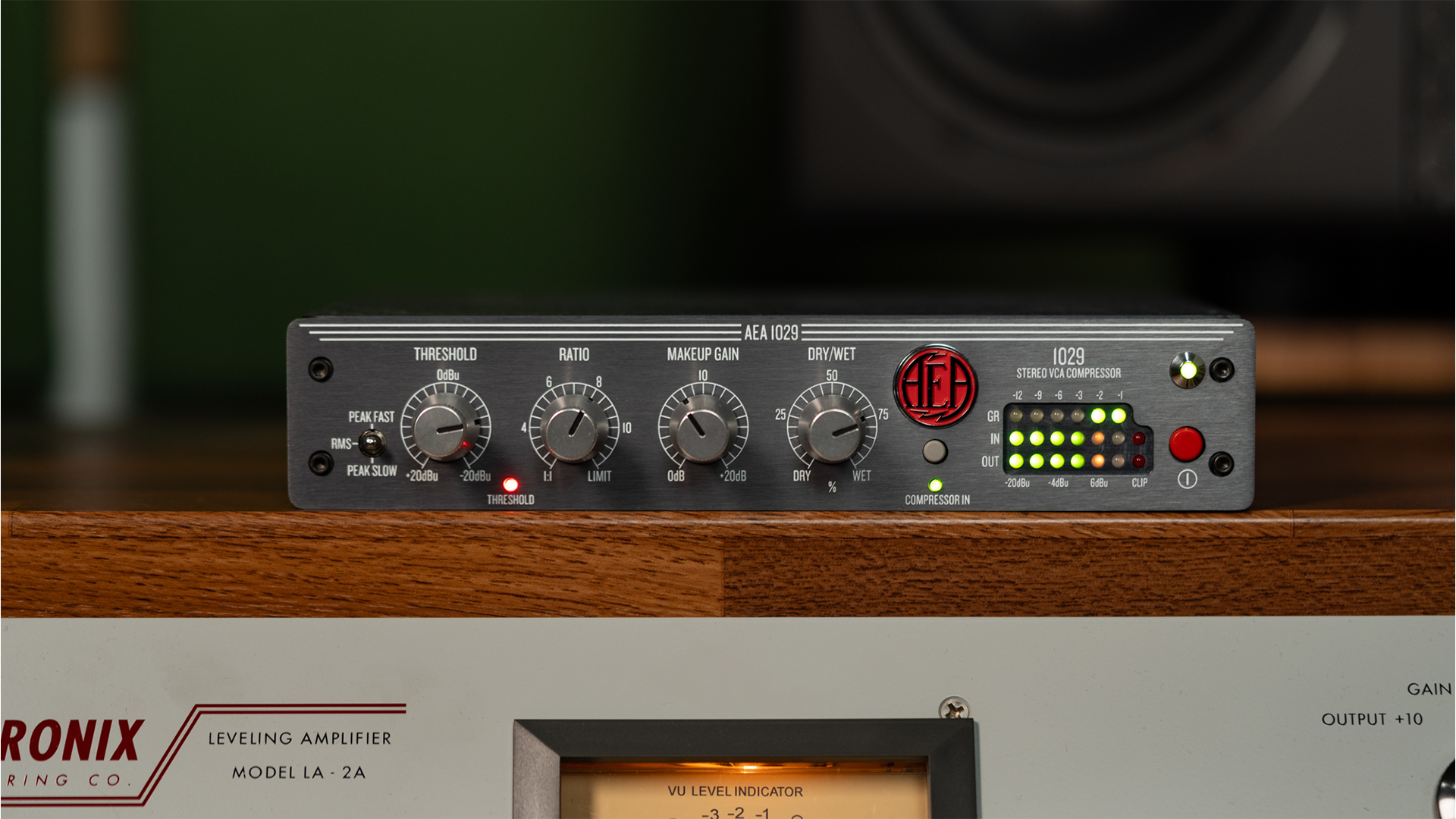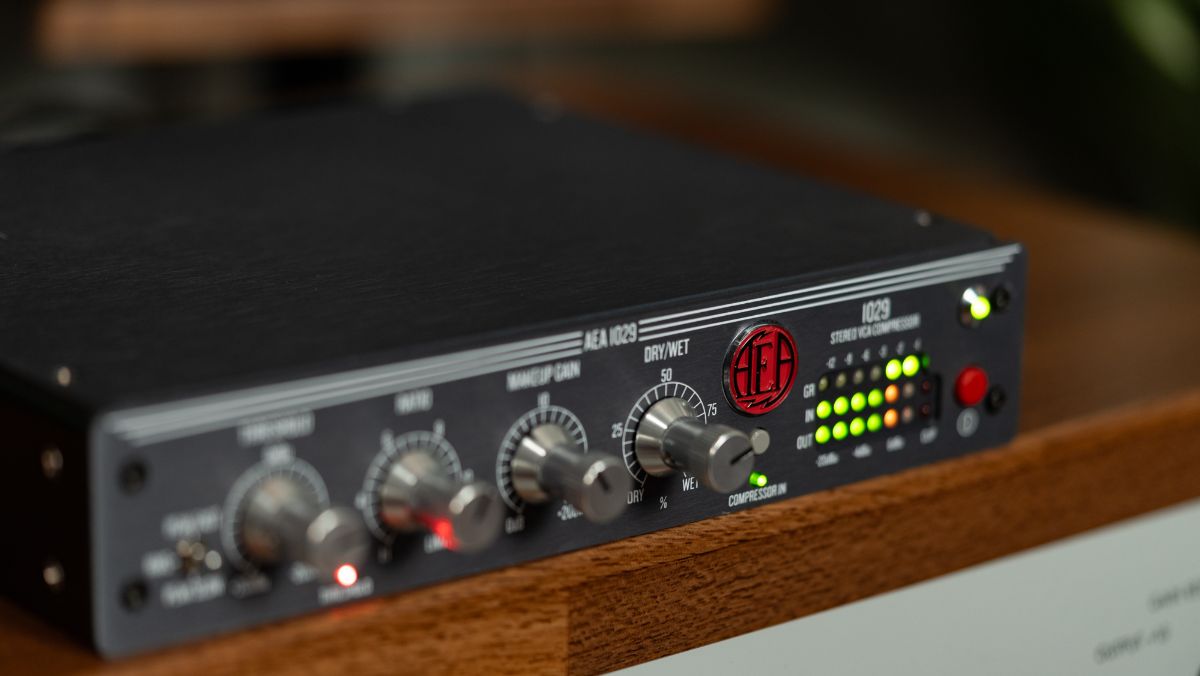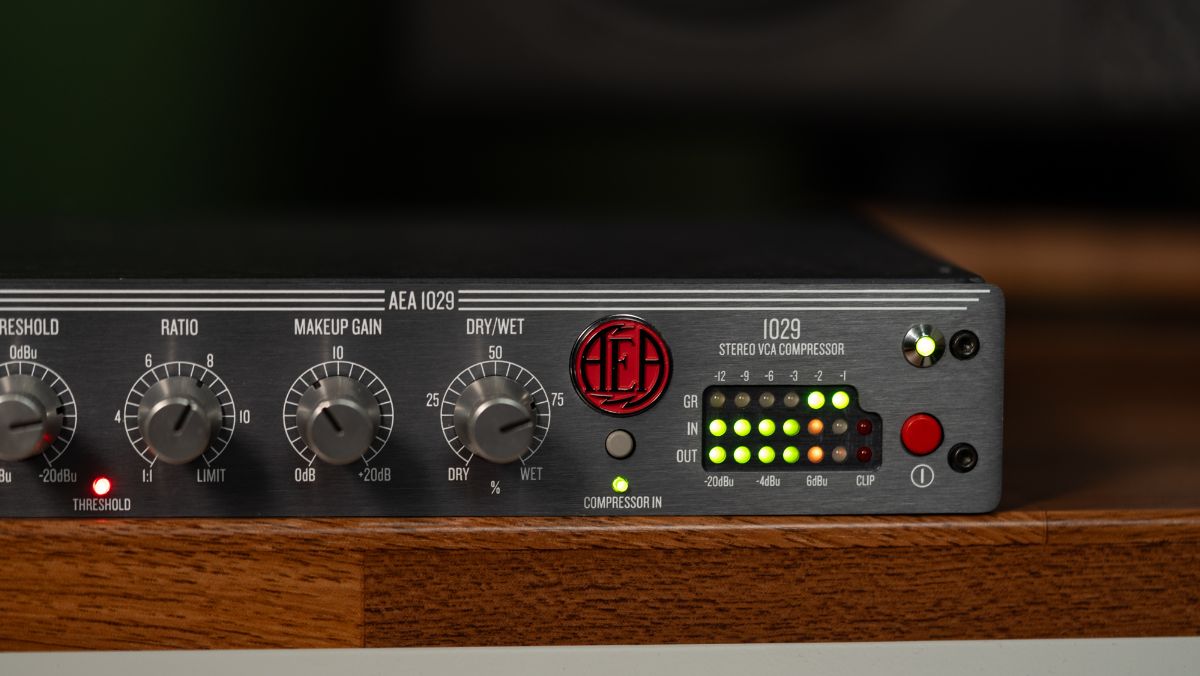Great recordings demand great dynamics, and getting great dynamics demands a great compressor. That’s why we’re so happy to introduce you to our AEA 1029 Stereo VCA (Voltage-Controlled Amplifier) Compressor. Whether you’re tracking vocals with your favorite ribbon microphone, mixing audio for film, or fine-tuning your latest project, this half-rack design’s clean squeeze is exactly what you need.
We put our decades of expertise into designing the 1029, wanting to be sure it hit some extremely important marks. First and foremost, it had to give you pristine audio with minimal distortion. Secondly, we went for effortless but precise dynamic control. And it had to do it all without sacrificing any of your sound source’s inherent character. It succeeds on all accounts.
We invite you to keep reading as we introduce the 1029 Stereo VCA Compressor in much more detail. From its compact dimensions to its extremely rare and out-of-production JFETs (Junction Field-Effect Transistor), we dig into everything that makes this such a special addition to the AEA line.
Premium Components for Unmatched Performance
Every component in the 1029 was chosen for its ability to deliver pristine, high-fidelity sound. A great example is the discrete op-amps we built it around. A proprietary design by Fred Forssell using NOS complementary PNP and NPN Toshiba JFETs, the op-amps operate in the current-to-voltage stage and are a key to the compressor’s clarity and precision. But the op-amps aren’t alone.
The heart of the 1029 includes two THAT 4305 VCA chips. A core component in controlling dynamics, they are what gives the 1029 its smooth, transparent compression and why it’s as effective on a delicate vocal as it is crushing drum overheads.
And we didn’t stop at great sound. We also made sure the entire unit is easy to use and integrate into your studio. Everything from its no-nonsense control layout to its compact enclosure creates what we think is the best VCA compressor available.
Even & Consistent Stereo Compression
We built the 1029 Compressor with AEA ribbon (and other premium) microphones in mind. It had to not only match these mics’ sonic and physical quality but to enhance them, and it definitely does. Whatever mic you plug in, the 1029 complements it without adding its own voice to the mix.
The 1029 is also, of course, perfect for stereo microphones and miking techniques. With summed input signals, it ensures balanced, smooth, and natural stereo compression across the stereo field. Specifically engineered to pair with our RPQ and TRP Series preamps, the combination gives you a pure-sounding stereo signal chain with an ideal gain structure, EQ, and dynamic control.
Recommended AEA microphone pairings:
- AEA N28 for drum overheads: Smooth out transients or crush the signal to bring out the full, stereo room sound.
- AEA R44CE for vocals: Brings the tracks to the forefront with added consistency and trademark passive ribbon warmth.
- AEA N22 for close-miked instruments: Tames peaks and dynamics while keeping the source full and natural.
- AEA R88 for orchestras and ensembles: Controls the dynamics of an entire sound stage while capturing a true, in-the-room recording.


